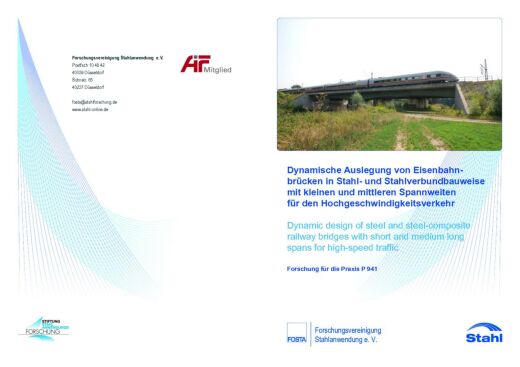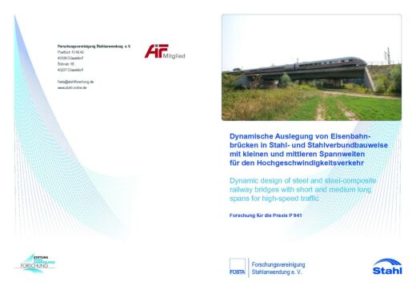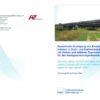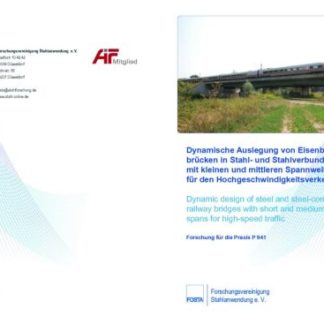Description
P 941 – Dynamic design of steel and steel-composite
railway bridges with short and medium long spans for high-speed traffic
Advancement of the European railway network is primarily characterized by an increasing use of highspeed trains and a significant rise of operating speeds. This trend is accompanied by an increasing need for railway tracks which are designed, upgraded or modified for high-speed. Steel and steel-composite construction is an economic and technical high-quality solution for bridges.
Besides filler beam bridges, which have been used frequently in the German railway network for more than 100 years, it is intended to apply modern steelcomposite crosssections with a high level of prefabrication. In particular, bridge-decks with composite prefabricated beams (VFT) are of high interest for the German railway company DB. Furthermore, recently developed steel trough bridges with thick floor steel slabs (d ≥ 100 mm) are very advantageous having, inter alia, small constructional depths and good acoustic emission characteristics.
Designing railway bridges for high-speed traffic consulting engineers in charge have to provide a dynamic verification proving that the bridge subjected to realistic dynamic train loads meets ultimate limit state (ULS) and serviceability limit state (SLS) standards. For velocities v > 200 km/h this verification requires an enormous workload and computational effort requesting special software and expertise in modelling bridge cross sections.
Aim of this proposed research project is the development of a simplified dynamic design of steel and steelcomposite railway bridges for high-speed and drafting of a user handbook for realistic modelling. The research focuses on steel trough bridges and classiciller beam cross-sections as well as on modern VFT decks. In the range of the project measurements on existing railway bridges have been performed to analyse the dynamic behavior of the different crosssection types. Further numeric simulations for detailed analyses of the structures are based on these results. The research goals should not only increase the competitiveness of consulting engineers but also that of technical departments of steel processing companies and companies employed in bridge construction. Furthermore this project can provide a significant contribution to an increased use of steel and steel- composite solutions for railway construction.
The research project was carried out at Institut für Stahlbau der RWTH Aachen and at Institut für Strukturmechanik der Bauhaus-Universität Weimar. FOSTA has accompanied the research work and has organized the project funding from the Foundation for Steel Application Research.
Only available in german language.
Published in:
2016
Authors:
M. Feldmann, B. Hoffmeister, H. Bigelow, C. Könke, V. Zabel, S. Höll, I. Reichert




